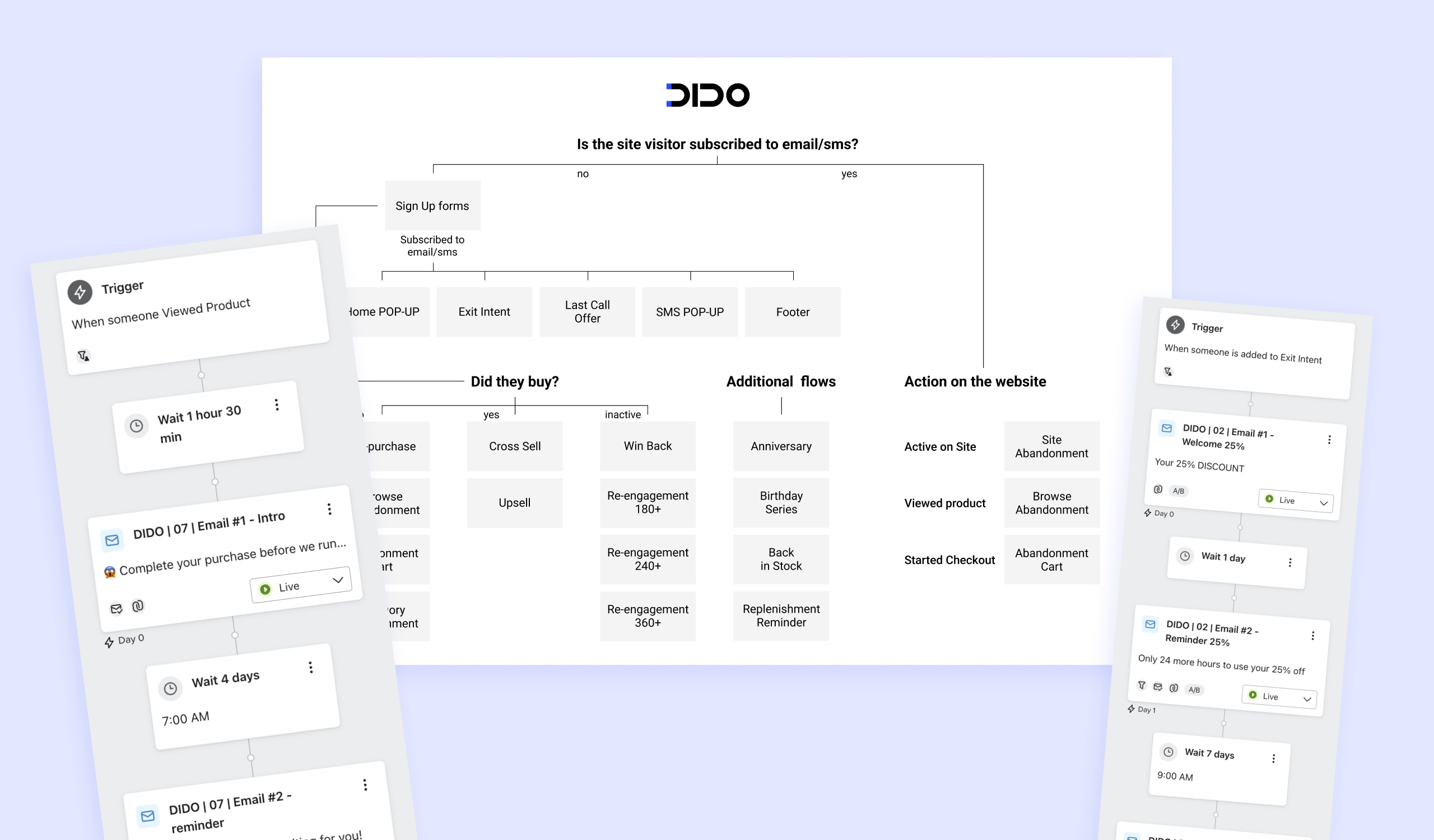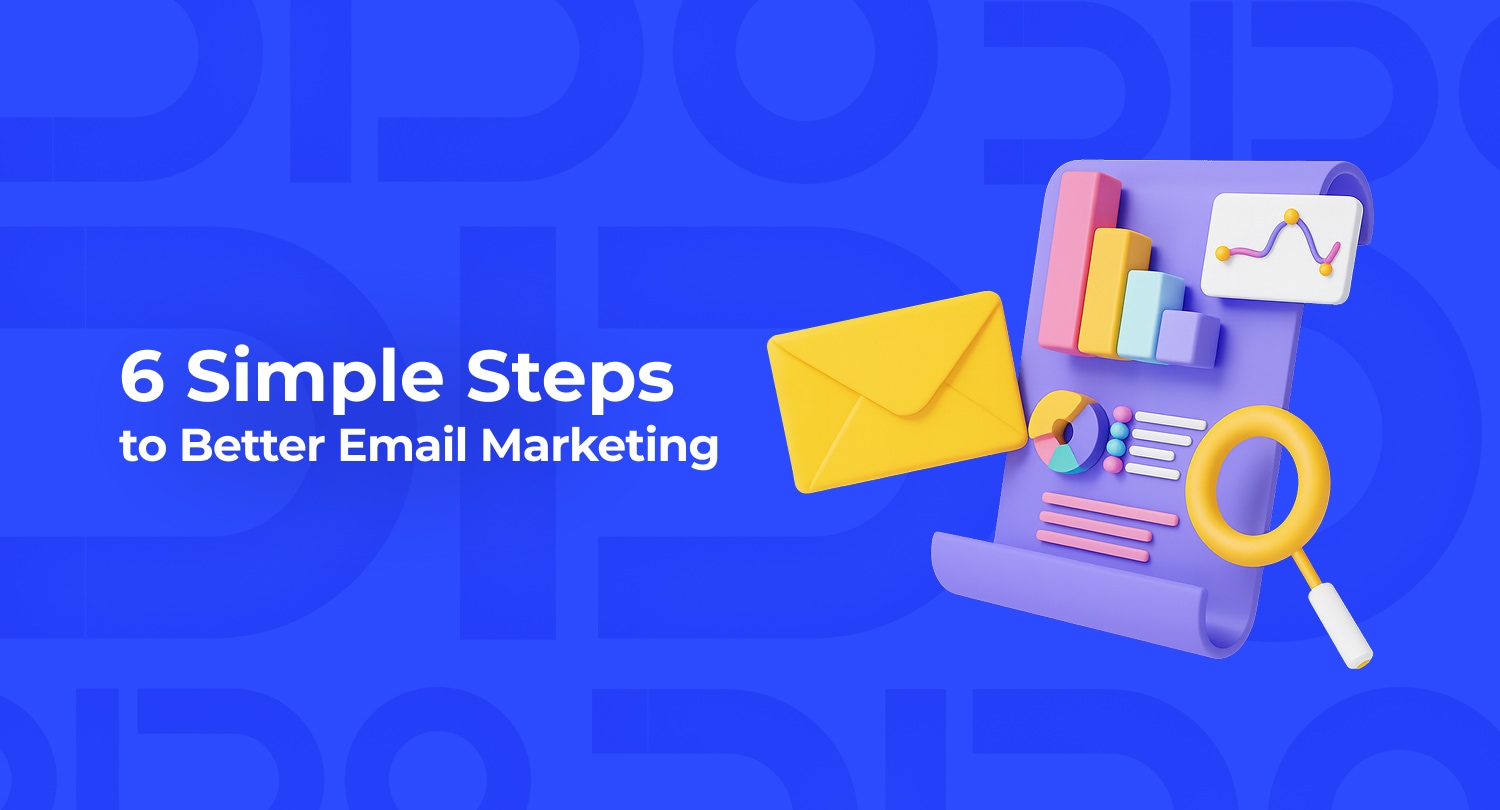Your email marketing strategy may be running…but is it performing at its best?
An email marketing audit is your opportunity to step back and evaluate what’s really working, what’s underperforming, and where improvements can be made. And, when done right, it can boost engagement, increase revenue, and help align your email campaigns with your brand’s bigger goals.
Here’s how to run an email marketing audit in six easy steps.
Step 1: Review Your Email Flows and Campaign Strategy
Begin by reviewing your automated email flows, including:
- Newsletters
- Welcome series
- Onboarding flows
- Win-back sequences
- Abandoned cart recovery
- Post-purchase follow-ups
- Product education emails
- Regular promotion campaigns
Then, for each of those flows and campaigns, ask yourself:
- Are all essential customer journey touchpoints covered?
- Is each flow/campaign set up with optimal timing and conditions?
- Does every email align with your brand's tone, visuals, and value proposition?
- Are the flows/campaigns personalized based on customer behavior or segments?
This step of the audit helps you identify any missing touchpoints, outdated messages, or opportunities to introduce personalization or automation.

Step 2: Examine Your Subscriber List Health
Your list quality is directly tied to performance, and a bloated or disengaged list affects deliverability and ROI.
That’s why it’s key to examine your subscriber list health regularly.
Take a look at your subscriber list and performance, and check out these key metrics:
- Open rate trends by segment
- Unsubscribe and opt out trends
- Bounce rate (should be under 2%)
- Spam complaint rate (should be under 0.1%)
Make sure to implement list-cleaning routines quarterly, launch re-engagement campaigns before removing cold contacts, and ensure your growth tactics include compliant opt-ins and GDPR/CCPA compliance.
(Segmenting your subscriber list into active, inactive, and high-value users can make all of this easier!)
Step 3: Evaluate Email Design and Copywriting
Email marketing is a visual and written experience, meaning both design and copy must work together to drive action.
Here are two checklists to see if your design and copywriting efforts are aligned and working as intended.
Design Checklist:
- Is the email mobile-responsive?
- Is the layout clean with a clear hierarchy?
- Are the CTAs visually prominent and actionable?
Copywriting Checklist:
- Is the tone consistent with your brand?
- Is your copy as personalized as possible?
- Are you using clear, benefit-focused language?
- Are subject lines attention-grabbing and relevant?
Make sure you’re consistently running A/B tests on subject lines, button placement, and copy tone to see what’s working, and adjust what isn’t.
Every detail matters when optimizing for conversions!
Step 4: Analyze Performance Metrics
Step 4 in an email audit is all about diving into analytics.
Use the data in your ESP to evaluate:
- Open rate → Aim for above 20%
- Click-through rate (CTR) → Aim for 2-5%
- Click-to-open rate (CTOR) → Aim for above 20%
- Conversion rate → Use your brand’s personal goals
- Revenue per email → Use your brand’s personal goals
Compare your metrics to your own brand’s historical benchmarks and industry standards to see how your emails are performing. If your CTR is low but open rates are strong, for example, it may signal poor content or unclear CTAs.
Stay on top of your trends by tracking performance based on campaign type, audience segment, and sending day/time to find actionable patterns and spots to improve.
Step 5: Map the Entire Email Creation Process
Strong strategy needs strong execution.
Make sure you’re executing at maximum effort every time by mapping your entire email creation process and evaluating how it’s working.
Ask yourself:
- How are briefs and approvals handled?
- Are you using a content calendar and automation tools?
- Who is responsible for copy, design, QA, and deployment?
- Do you follow a consistent workflow with built-in review steps?
Bottlenecks or inconsistent processes can affect performance, which is why it’s so important to streamline your workflow for speed, clarity, and accountability.
Regularly update internal documentation and templates to reflect best practices and current brand guidelines, and stick to your processes.
Step 6: Identify Areas for Expert Support
Not every gap needs to be solved internally.
If you’re seeing poor results or lack the time/resources to optimize, it’s worth bringing in a specialist. That’s why Step 6 involves outsourcing the stuff beyond your skillset to the professionals.
A professional audit can:
- Offer objective insights
- Reveal missed opportunities
- Provide expert recommendations
Look around to find an agency or individual that suits your needs and matches your budget — but don’t forget to check that they can actually deliver what they promise!
P.S. Did you know DIDO Agency offers a free expert-led email audit to help eCommerce brands uncover quick wins, optimize flows, and boost ROI? Request your free email marketing audit here.
Final Thoughts
A comprehensive email marketing audit isn’t a one-time task—it’s a recurring, proactive effort to improve performance.
From technical health checks to creative evaluation, every part of your email program deserves scrutiny.
And, if you put the effort into an audit?
The payoff is higher engagement, stronger customer relationships, and sustainable growth.
So, if you haven’t reviewed your email marketing strategy recently, consider this a sign that now is the time.
Take your performance to the next level with a free audit by DIDO Agency.
